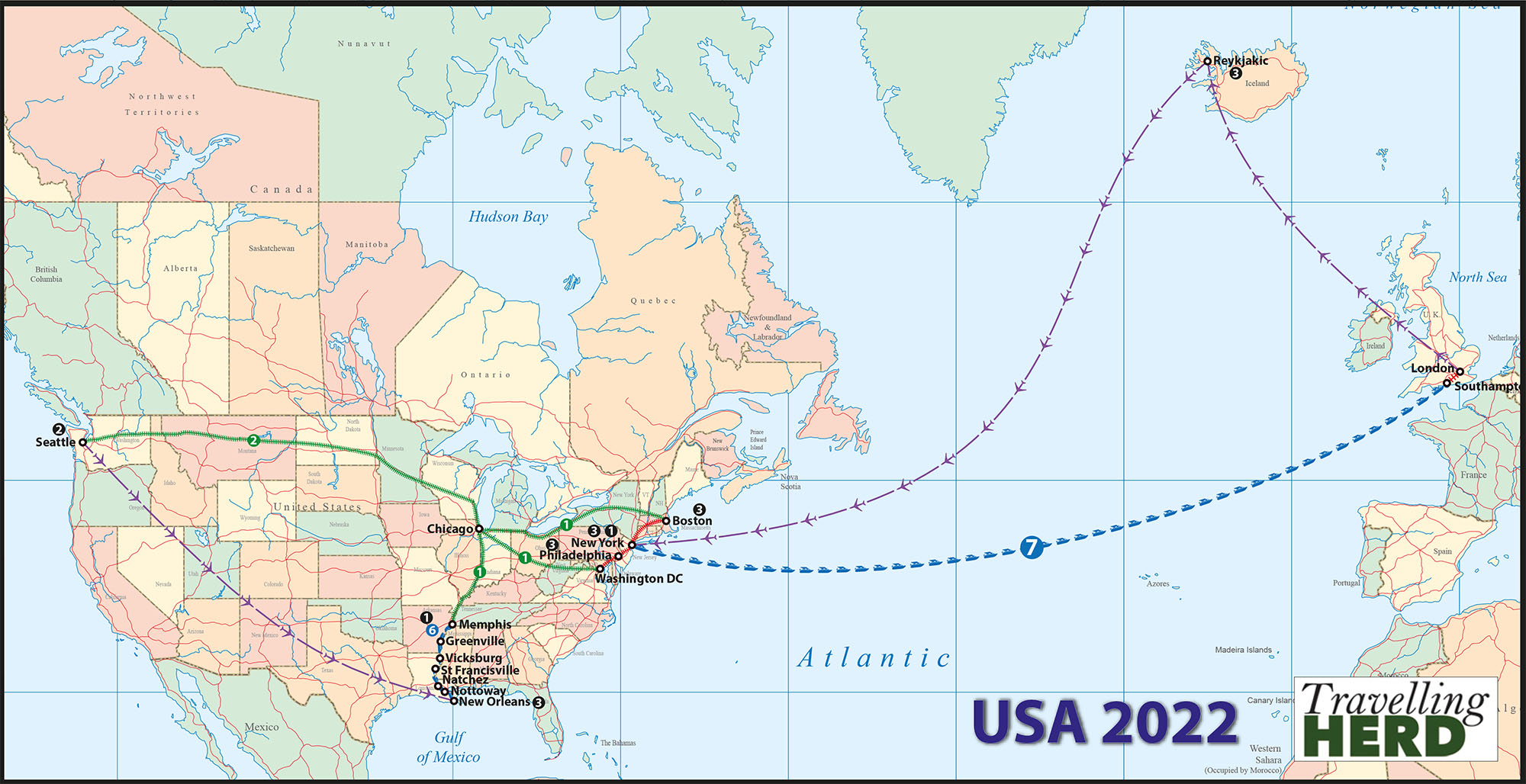Tuesday 3rd May 2022
Under current restrictions, passengers are required to test negative within the 24 hours prior to boarding a flight to America and so we had independently verified Covid lateral flow tests arranged for 15:00.
As rain was forecast we had booked a guided coach tour, which would keep us inside and out of the rain for the morning, to the lava tunnel at Raufarhólshellir, blissfully unaware that this excursion was to become the cause of all of Robert’s issues on the following day.
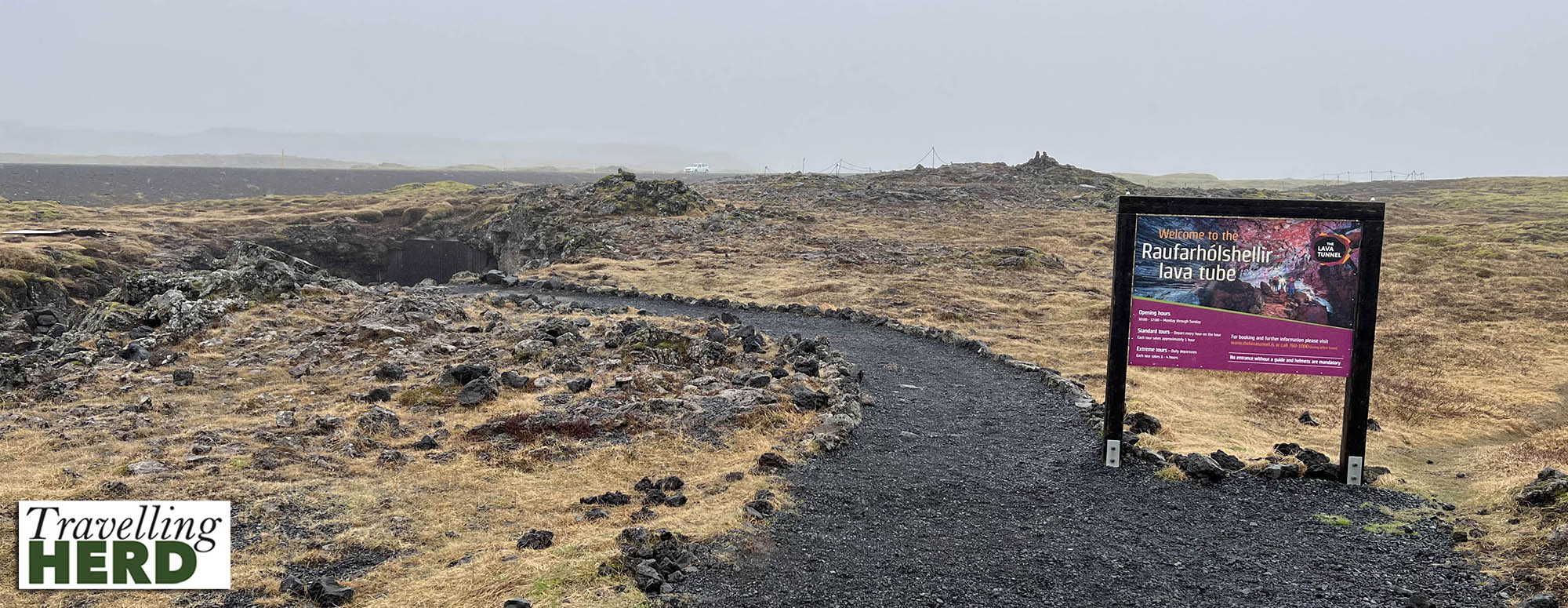
As always in Iceland, the geology was impressive. The lava tube is 4,500 feet long and is one of the longest known lava tubes in Europe.
Lava tubes are underground and are usually discovered only when a section of the “roof” caves in. At Raufarhólshellir, the roof has collapsed in several places and there are still snow drifts inside left over from the winter.
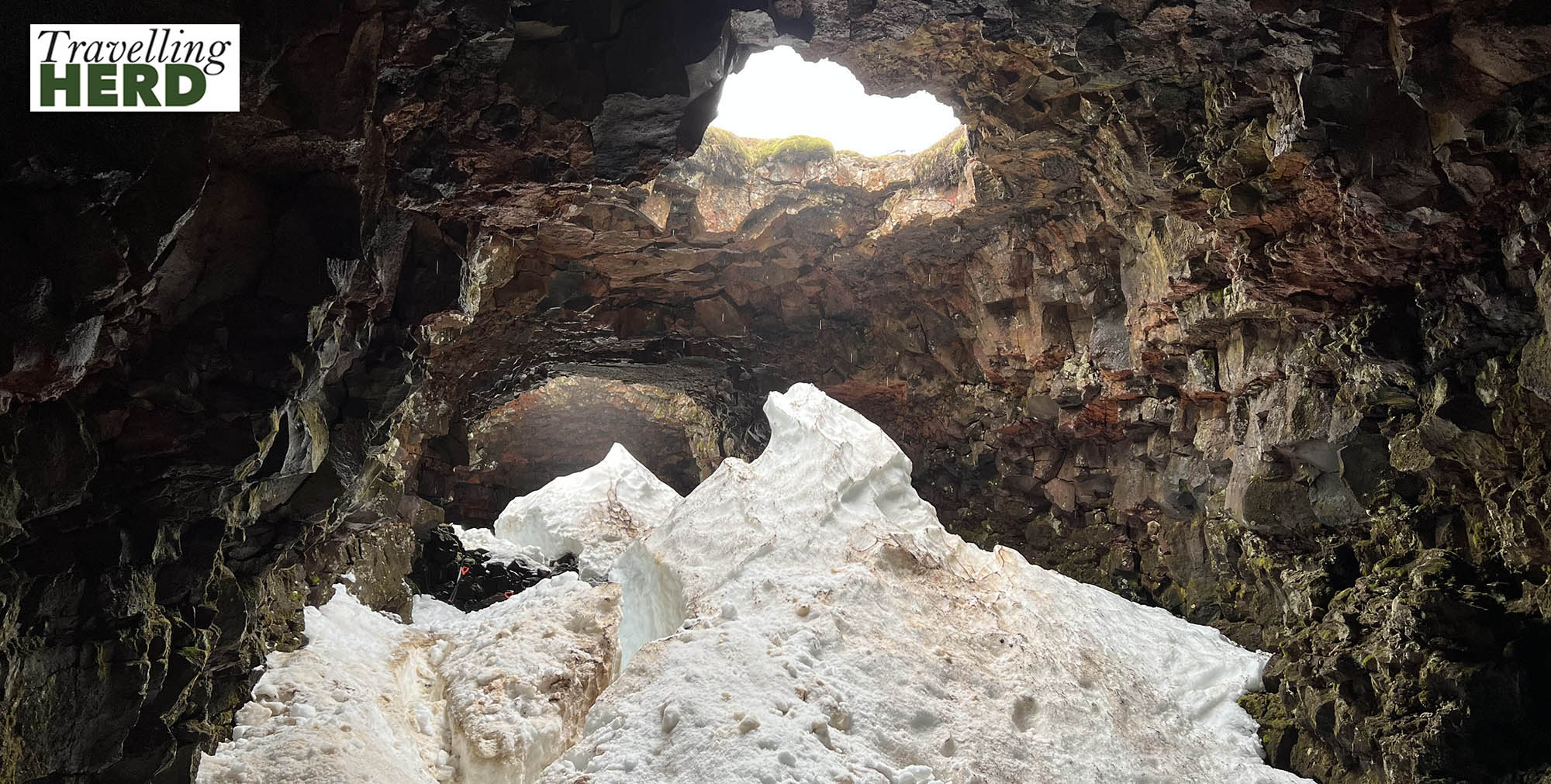
Lava tubes are only formed during the course of effusive eruptions.

If the magma has low viscosity the dissolved gases can escape from it easily and when the magma reaches the surface it forms lava flows which move slowly and steadily along the ground, melting the rock beneath it and creating a lava channel.
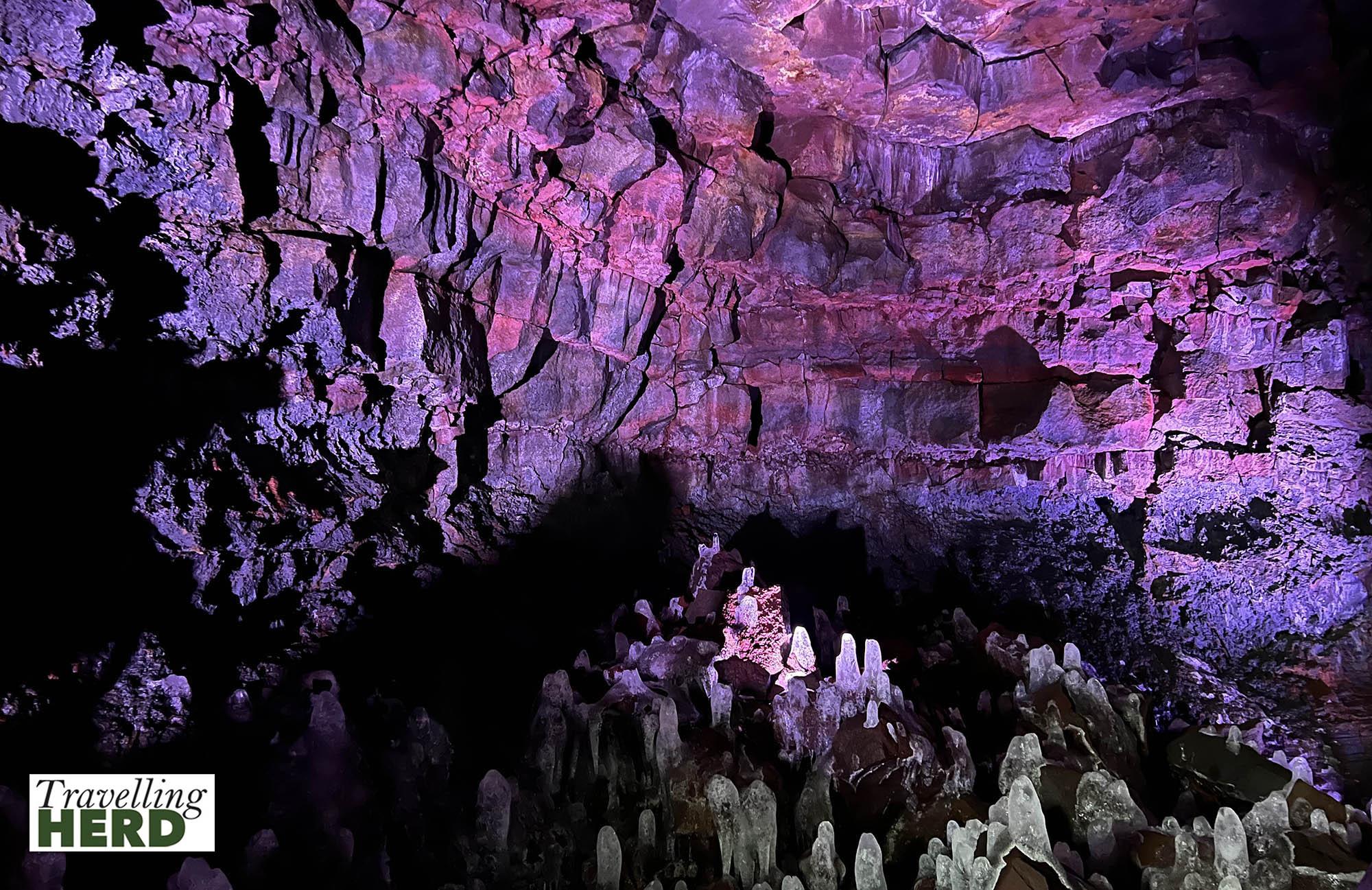
Lava tubes develop when a crust forms on a lava channel, which solidifies and becomes thick enough to create a roof. When the eruption ceases, the lava gradually drains away, and the tube is left partially or totally empty revealing an array of beautiful rock formations.
As the gas escapes from the magma, the solidifying rock which is left is very porous and if it is raining above ground, it is raining in the lava tunnel and icicles form.
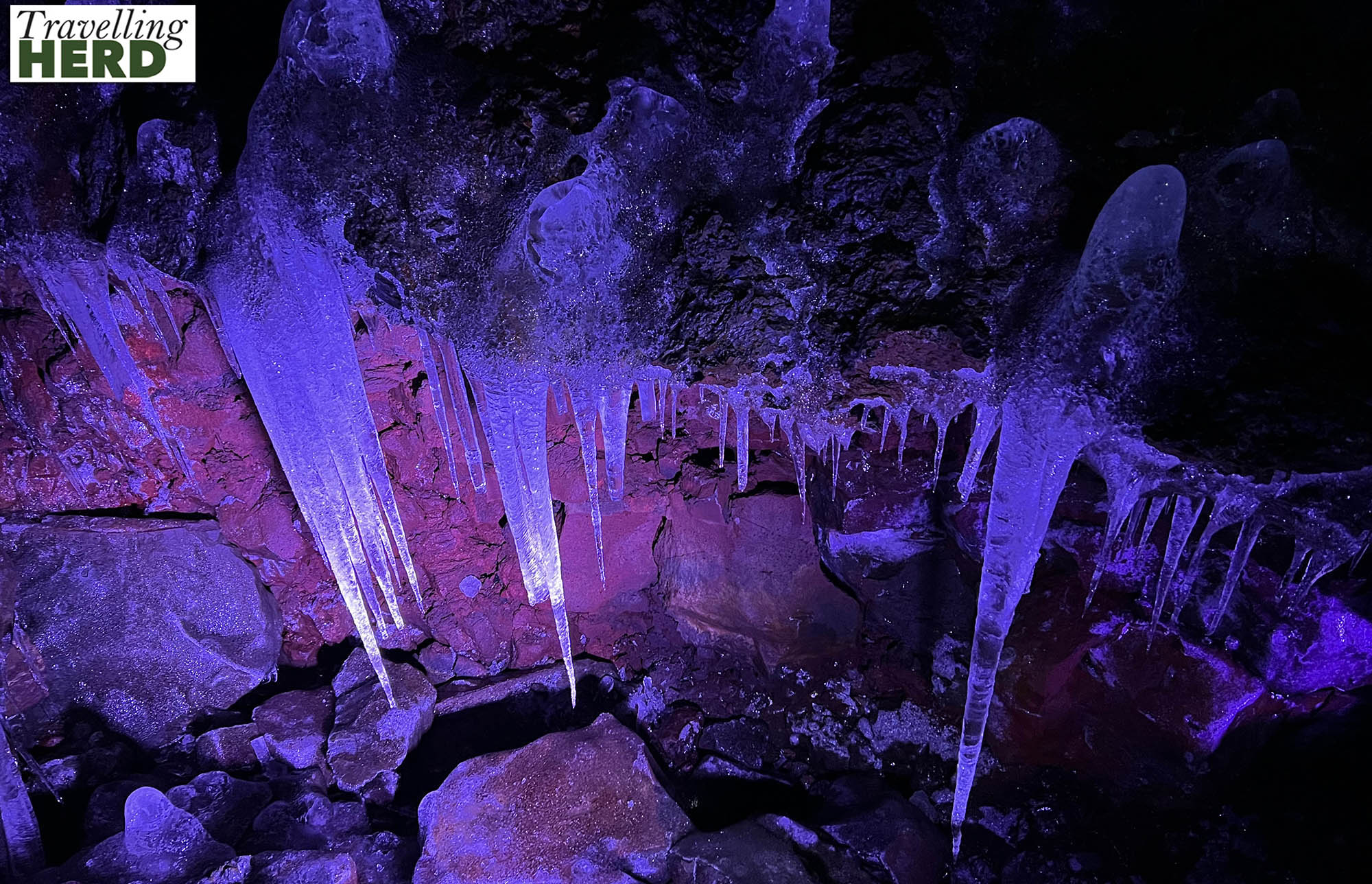
Our guide had a very dry sense of humour and damaged vocal chords. In his distinctive raspy delivery, he informed us that the porous characteristics of the rock also account for the fact that there is no echo in the lava tunnel. This acoustic anomaly means there are no bats in the tunnel either as they cannot navigate by echolocation without an echo and also the fact there are no bats at all anywhere in Iceland.
We were also informed that the temperature inside the lava tunnel is a constant 4 degrees which very fortuitously is the ideal temperature for chilled beer.
Iron deposits give the rocks a distinctive rusty orange colour.
In places, the snow drifts are still so deep that staff have had to cut a walkway through.
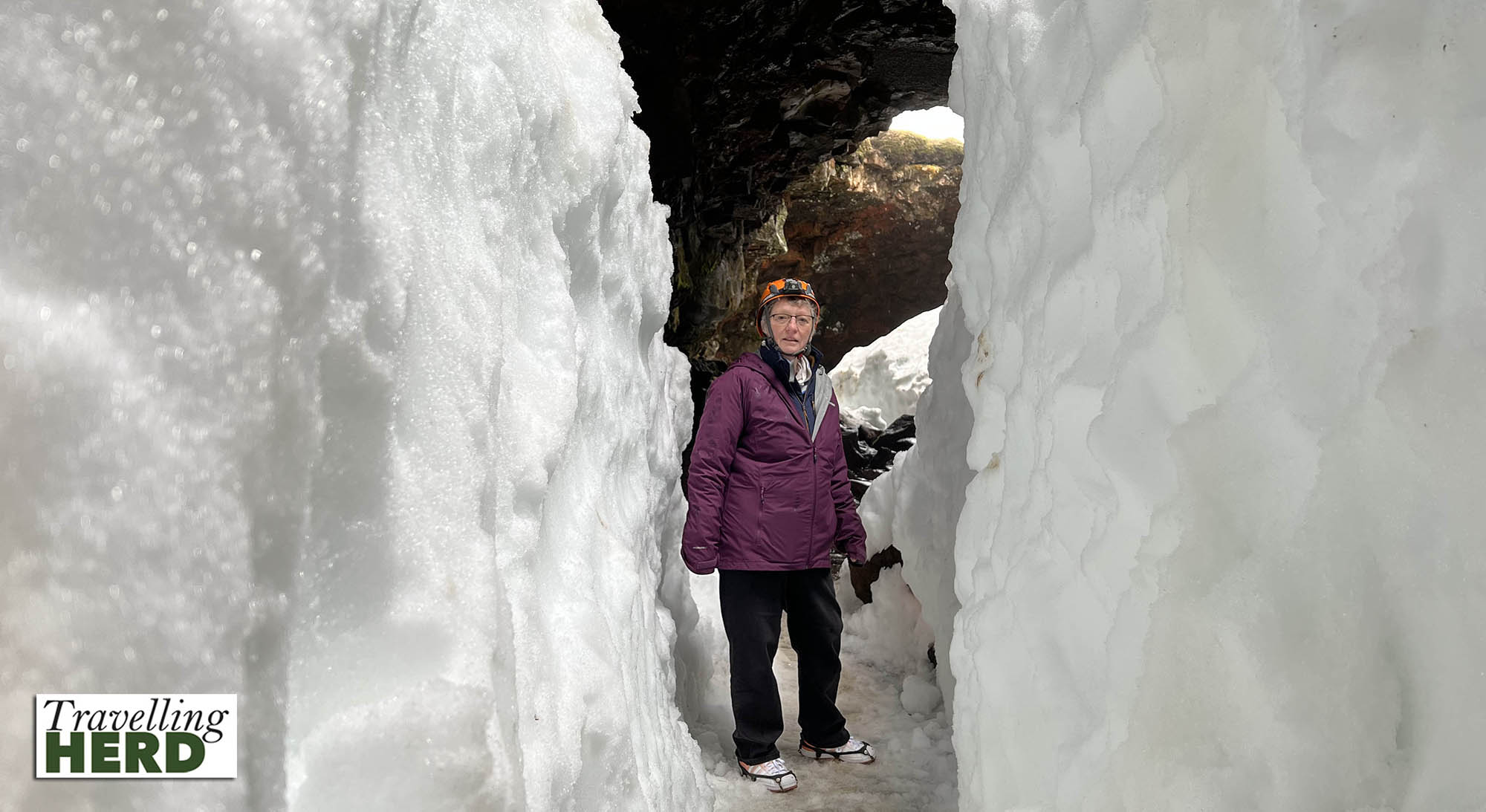
Back in Reykjavik, we collected our documentation from the hotel.
With a couple of hours to spare, first we went to the Perlan Museum which translates as “pearl” and promises to reveal the Wonders of Iceland.
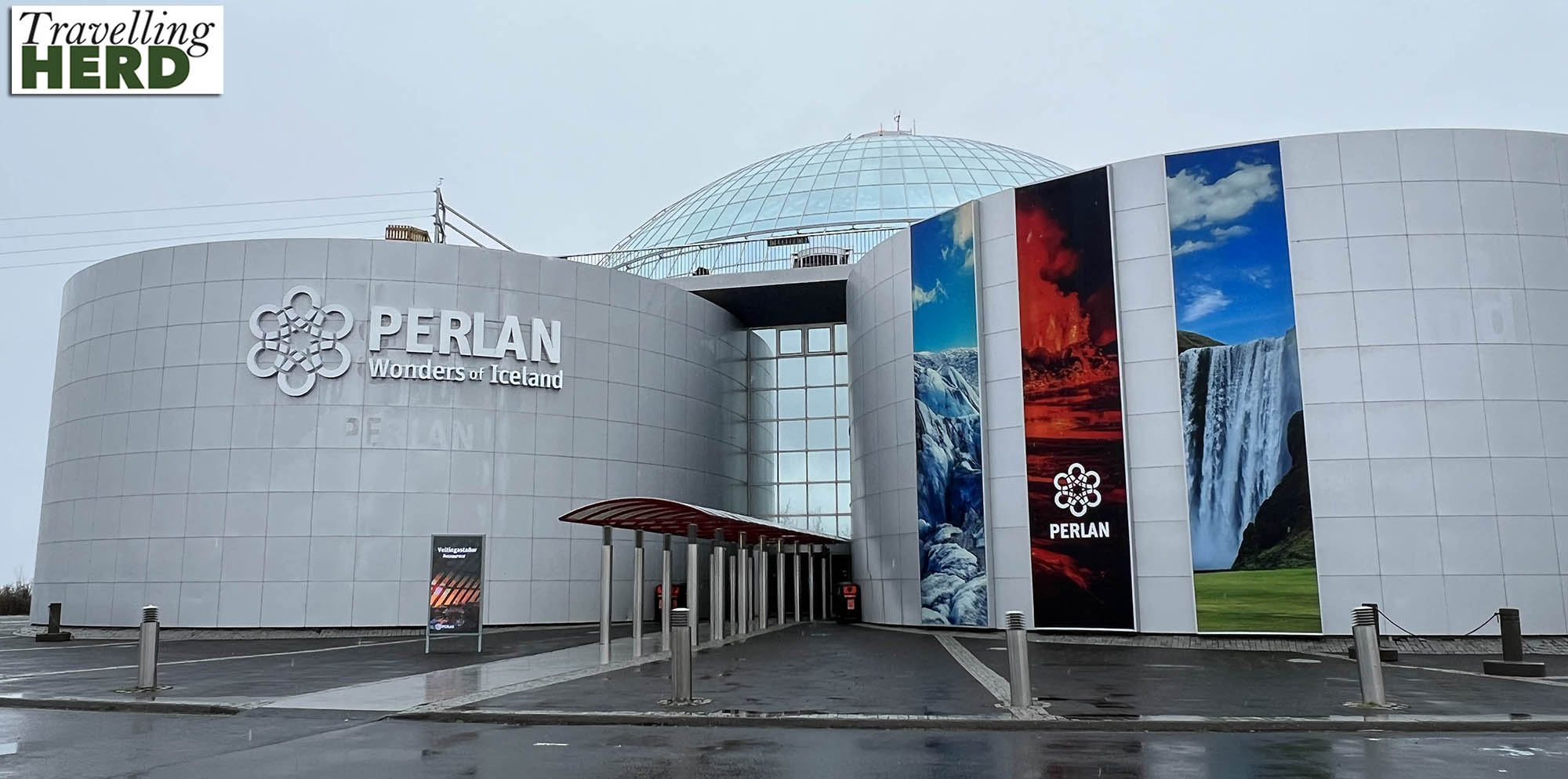
Located on top of the hill Öskjuhlíð, its glass dome can be seen all around the city. There is an interactive exhibition about glaciers and an Ice Cave has been created using more than 350 tons of snow.
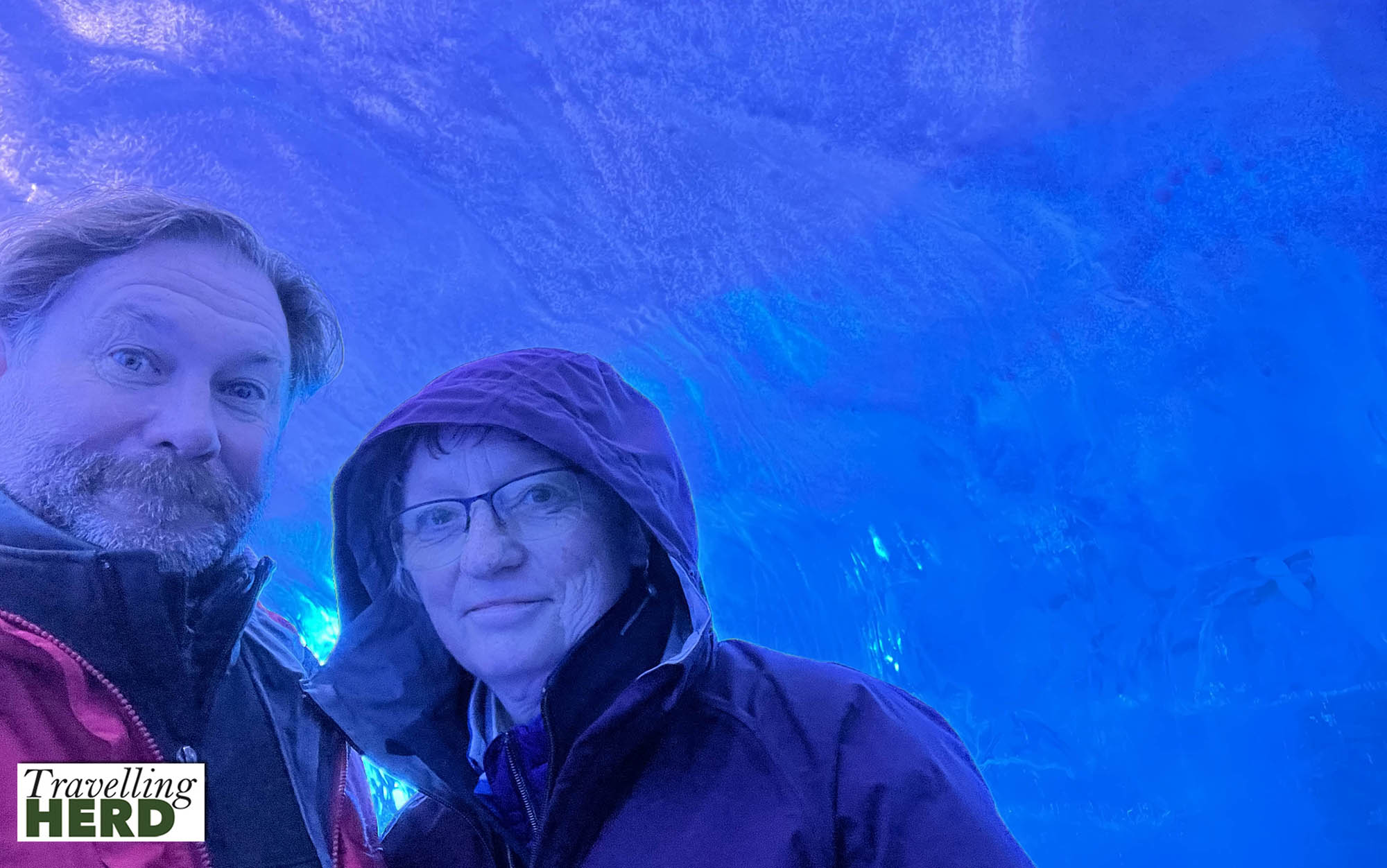
It is over 100 meters long and you can see a dark line in the walls where the ash from the 2010 eruption settled [see Video of the day].

The views from the observation platform are some of the best in the city and include the Sky Lagoon [above] and the Hallgrímskirkja [below].

From here we walked down to the bus station for our Covid tests.
This was rather nerve-wracking as one faint pale pink line could prevent either one of us from travelling on the following day. The results are sent via email within 20 minutes.
Matilda was pleased that she wasn’t expected to wait like a naughty pupil outside the head’s office for the result and possible humiliation of being unable to travel.
We were relieved when Robert received the emails giving us both the all clear to board the flight the next day.
Video of the day:
Selfie of the day:
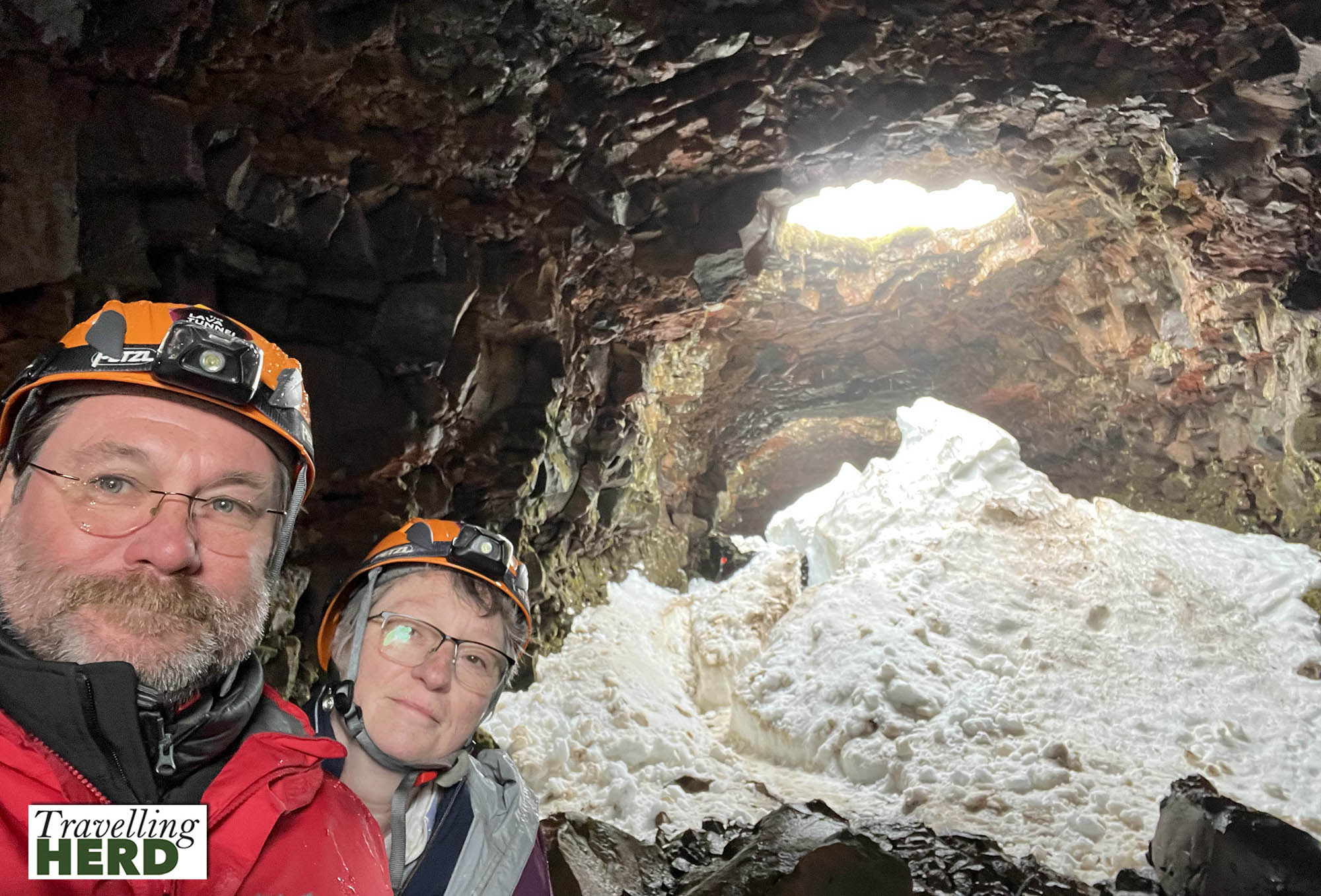
Dish of the day:
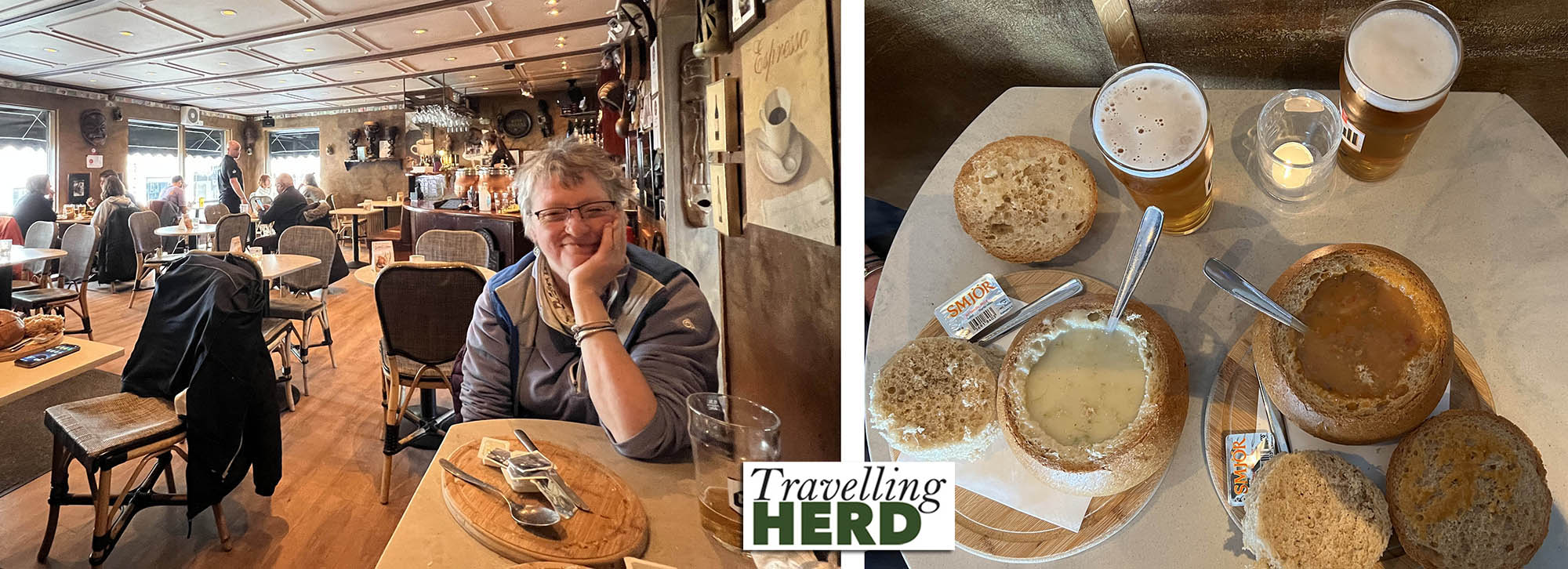
Route Map:
